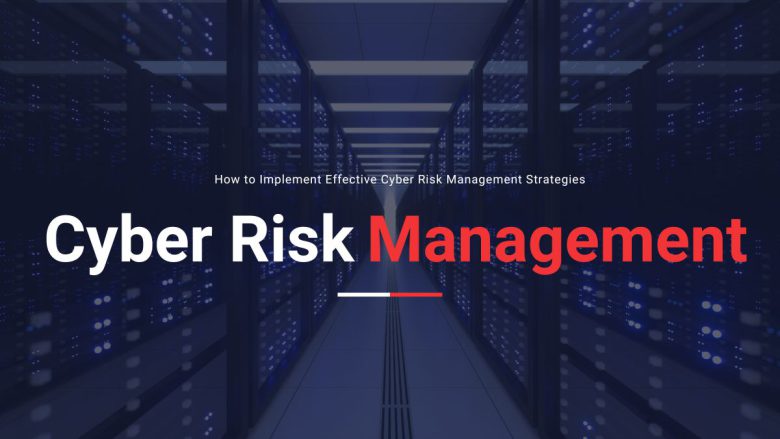
In the fast-paced digital geography of the moment, effective cyber risk management has come nothing short of imperative. As associations decrease calculations on connected systems, data-driven management, and digital inventions, the eventuality of cyber pitfalls and vulnerabilities continues to expand. In this blog post, we’ll embark on a comprehensive trip to explore the complications of enforcing effective cyber risk management strategies. We will uncover what it takes to shield your association from the ever-evolving realm of digital pitfalls, all without counting on pellet points.
Understanding Cyber Risk Management
Before we claw into the strategies, it’s essential to understand the core conception of cyber risk management. At its substance, cyber risk management is the practice of relating, assessing, and mollifying pitfalls to an association’s digital means and information systems. These pitfalls can manifest in colorful forms, from sophisticated cyberattacks to mortal crimes and system vulnerabilities. The thing of cyber risk management is to produce a structured approach that safeguards sensitive data, ensures business durability, and minimizes the impact of cyber incidents.
1. Comprehensive Risk Assessment
The first step in enforcing effective cyber risk management strategies is a comprehensive risk assessment. This entails relating and assessing implicit pitfalls to your association’s digital structure. It’s about understanding the geography of pitfalls, both internal and external, that could peril your data and management. pitfalls might include data breaches, ransomware attacks, bigwig pitfalls, or force chain vulnerabilities. This step lays the foundation for informed decision- timber and risk prioritization.
2. Security Controls Implementation
Once you’ve linked the pitfalls, the coming critical step is enforcing robust security controls. These controls act as your association’s frontline defense against cyber pitfalls. They encompass a wide range of measures, including firewalls, encryption,multi-factor authentication, intrusion discovery systems, and regular software doctoring and updates. Effective security controls are essential to address known vulnerabilities and bolster your association’s cyber adaptability.
3. Employee Training and Cyber Awareness
In the world of cyber risk management, mortal error remains a significant contributor to cyber incidents. Hence, it’s imperative to invest in comprehensive hand training programs that raise mindfulness about cyber pitfalls and inseminate safe online practices. workers are the first line of defense, and their cybersecurity knowledge is a critical asset in relating and mollifying pitfalls. Fostering a culture of cybersecurity mindfulness in your pool is vital in fortifying your association’s defense.
4. Incident Response Planning
No matter how robust your preventative measures are, it’s essential to be prepared for the possibility of a cyber incident. Effective incident response planning is pivotal. These plans outline the way your association will take in the event of a cyber incident, icing a nippy and coordinated response. Regular testing and simulation exercises of these plans are vital to identify sins and enhance response times, enabling your association to minimize damage and recover snappily.
5. Third-Party Risk Management
In the moment’s connected business geography, associations frequently rely on third-party merchandisers and suppliers for colorful services and technologies. It’s critical to assess and manage the cyber pitfalls associated with these hookups. Due industriousness in opting and covering third-party providers is essential. icing that they meet cybersecurity norms and cleave to your association’s security protocols is pivotal to mollifying implicit vulnerabilities.
6. Continuous Monitoring and Threat Detection
Cyber threat management isn’t a one-time task; it’s an ongoing trip that requires nonstop alerts. enforcing advanced trouble discovery and security information and event management( SIEM) results is essential to cover systems and networks for suspicious conditioning. nonstop monitoring allows for the prompt discovery and response to pitfalls, precluding them from rising into major incidents.
In conclusion, effective cyber risk management isn’t a task to be taken smoothly, nor is it a one- size- fits- approach. It’s a holistic strategy that encompasses colorful rudiments, from threat assessment and security controls to hand training, incident response planning, and third-party threat management. In the digital period, where the cyber trouble geography is constantly evolving, enforcing these strategies isn’t just prudent but necessary for the long-term viability and security of your association. Cyber threat management is the guard that safeguards your digital means, data, and character in a connected world, and it’s a trip that requires nonstop trouble, rigidity, and a visionary station.


